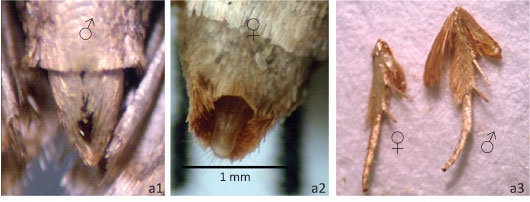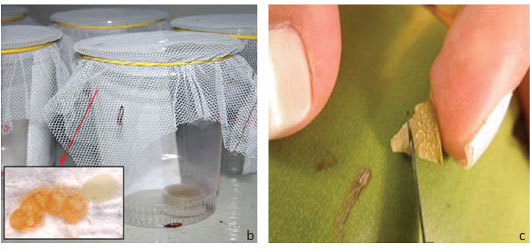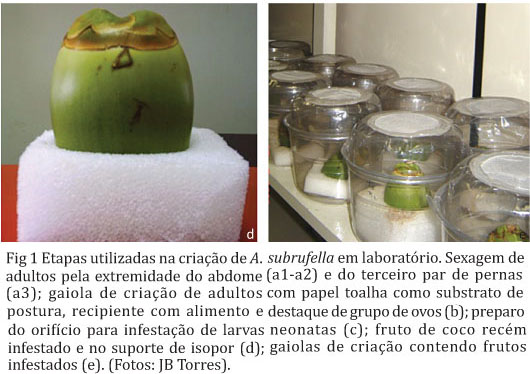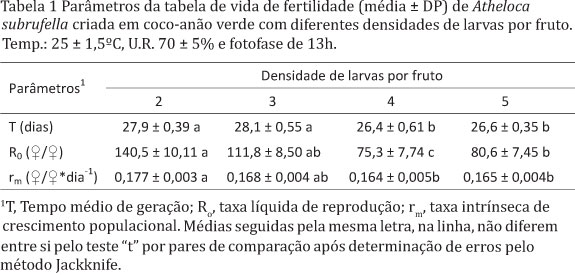Rearing Technique and Biological Traits of Atheloca subrufella (Hulst) (Lepidoptera: Phycitidae) in Coconut Fruits. Larvae of the coconut moth Atheloca subrufella (Hulst) develop in flowers and fruits of coconut, Cocos nucifera, causing precocious abscission of these structures and, hence, yield decrease. This work studied a feasible and suitable rearing technique for A. subrufella using fruits of coconut. We first determined the appropriate density of larvae to be reared per coconut fruit (among two, three, four or five larvae) and later tested the suitability of this rearing technique for three successive generations. The storage of egg and pupal stages during 0, 5, 10 and 20 days was also studied at 12ºC. Based on the fertility life table parameters, the best results were achieved by rearing two or three larvae per fruit as they yielded the best net reproductive rate and intrinsic rate of population increase. In addition, eggs and pupae of A. subrufella can be stored at 12ºC up to five days with viability higher than 90%. Adult moths emerged from pupae stored for five days at 12ºC produced an average of 219.4 eggs and lived 18.8 days. Storage periods for eggs and pupae over 10 days significantly reduced egg viability and adult fecundity, respectively. Thus, the technique in here described was shown to be suitable for the continuous rearing of A. subrufella in laboratory conditions.
Biology; fertility life table; insect storage






